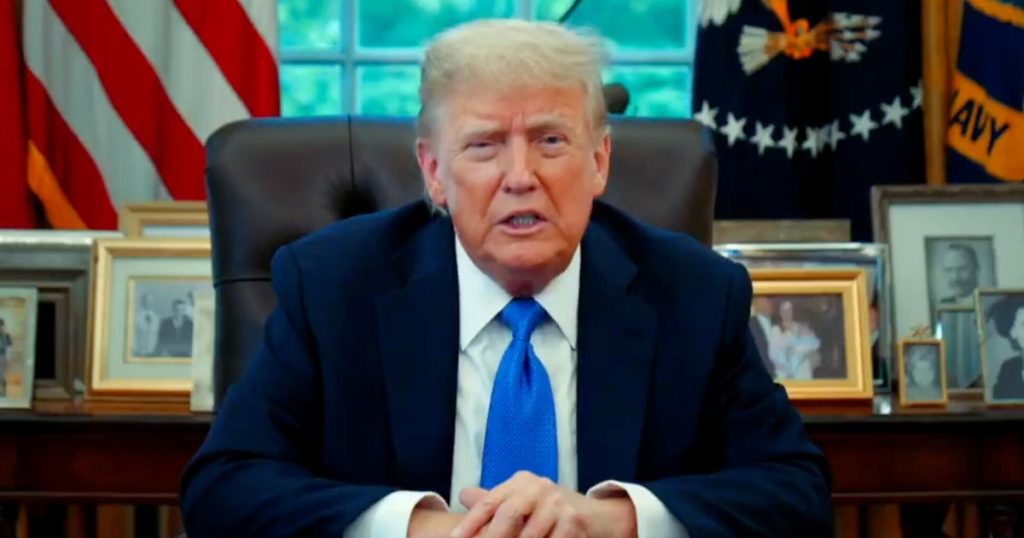On Wednesday, President Trump enacted a significant travel and immigration ban affecting a total of 19 countries, citing national security concerns. This newly signed proclamation entails a full ban for nationals from a dozen countries and partial restrictions for seven others, primarily targeting regions where terrorism risks are perceived to be heightened. The ban, which aims to protect American citizens from potential threats, is set to take effect on June 9 at 12:01 a.m.
| Article Subheadings |
|---|
| 1) Details of the Travel Ban |
| 2) Official Justifications for the Ban |
| 3) Potential Impact on Immigration |
| 4) Historical Context of Travel Bans |
| 5) Future Projections and Revisions |
Details of the Travel Ban
President Trump’s latest proclamation fully prohibits entry from a list of twelve countries, which includes Afghanistan, Myanmar, Chad, Republic of the Congo, Equatorial Guinea, Eritrea, Haiti, Iran, Libya, Somalia, Sudan, and Yemen. These nations have been described as lacking adequate vetting procedures, which has raised alarm about security threats. Alongside this, there is a partial suspension concerning seven additional nations: Burundi, Cuba, Laos, Sierra Leone, Togo, Turkmenistan, and Venezuela. The implications of this proclamation are profound, as it impacts both prospective immigrants and certain temporary visa holders.
Official Justifications for the Ban
In a recent statement, President Trump asserted that these sweeping restrictions are crucial for safeguarding American lives. “President Trump is fulfilling his promise to protect Americans from dangerous foreign actors that want to come to our country and cause us harm,” a White House spokesperson declared. The rationale mixes concerns regarding unchecked terrorism, insufficient vetting practices, and poor collaboration in deportation agreements with the nations on the list. Following a recent incident in Boulder, Colorado, where an Egyptian national allegedly overstayed a tourist visa and committed violence, these concerns have intensified.
Potential Impact on Immigration
The impact of this travel ban could be substantial. Roughly estimated, it may affect thousands of individuals who are either in the process of seeking U.S. residency or currently holding temporary visas. Specific exemptions exist, allowing U.S. permanent residents, diplomats, certain Afghan nationals who assisted U.S. forces, athletes, and dual nationals to continue their travels unimpeded. However, for citizens from the affected countries, the ban adds another significant barrier to entry into the United States.
Historical Context of Travel Bans
This current decree follows a series of prior travel restrictions initiated during Trump’s first administration, which also focused predominantly on countries with significant Muslim populations. The earlier travel bans, which began in January 2017, provoked widespread protests across the United States, leading to chaotic scenes at major airports and legal battles instigated by advocates who argued these actions were discriminatory. Although the policies sparked major controversies, the Supreme Court ultimately upheld the most recent iteration of these travel restrictions, citing the government’s authority to enforce policies deemed necessary for national security.
Future Projections and Revisions
The implications of Trump’s latest proclamation may not be entirely static, as he indicated that revisions could be made. He mentioned new threats could be added and existing countries dropped if they make significant improvements to their vetting processes. This underscores a dynamic approach to the proclamation and highlights ongoing discussions regarding immigration law and national security. The lingering question is whether this new order will provoke similar legal challenges as its predecessors.
| No. | Key Points |
|---|---|
| 1 | The travel ban prohibits entry from twelve countries and partially impacts seven others. |
| 2 | Authorities argue that the ban is necessary to mitigate risks related to terrorism and inadequate vetting. |
| 3 | The ban could affect thousands of individuals, imposing significant barriers to entry into the U.S. |
| 4 | Historical precedents indicate that past restrictions have led to substantial protests and legal challenges. |
| 5 | Future revisions to the ban may occur depending on security assessments from listed countries. |
Summary
The signing of this travel ban represents a critical intersection of national security politics and immigration law in the United States. The administration seeks to underscore its commitment to American safety by enforcing strict entry requirements on specific countries deemed to pose threats. As history may dictate, the ban is likely to face significant legal scrutiny and could evolve based on assessments of countries’ cooperation and security measures.
Frequently Asked Questions
Question: What are the countries affected by the travel ban?
The travel ban affects twelve countries, including Afghanistan, Iran, Libya, and Yemen. Additionally, partial restrictions apply to seven other nations such as Venezuela and Cuba.
Question: What exemptions are included in the travel ban?
Certain exemptions are made for U.S. permanent residents, diplomats, special visa holders from Afghanistan, athletes, and dual nationals with passports from non-banned countries.
Question: What has been the historical response to prior travel bans?
Previous travel bans initiated by the Trump administration faced widespread protests, legal challenges, and were scrutinized for potentially discriminatory implications. The Supreme Court ultimately upheld the last version, confirming the government’s authority in this matter.


